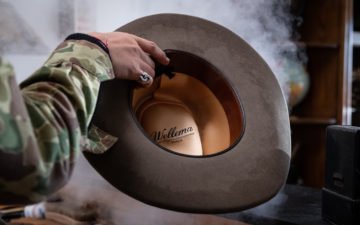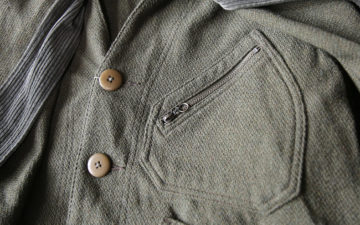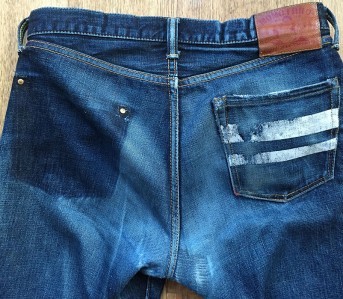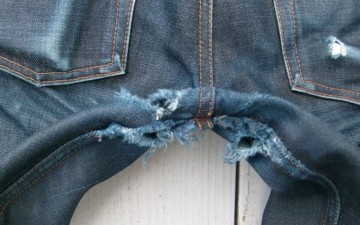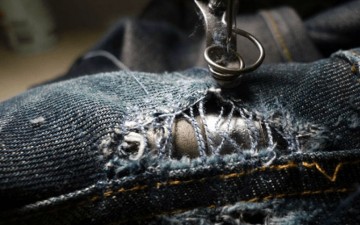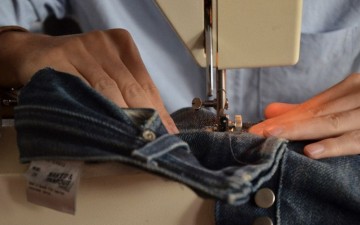Repairing denim is one wonderful part of the hobby, and the results are often a beautiful part of the aging process. Most damage is done to the denim itself, which you can repair by darning (see our full guide here). However, not all repairs apply just to the fabric. This mostly applies to cases of either manufacturing defects, or some sort of unexpected, catastrophic failure of a seam.
A few common ones are split side seams, torn or missing belt loops, and detached back pockets. These repairs are all quick and simple, and with a little bit of care, you won’t be able to tell the difference from the original product.
Reattaching a Back Pocket
Eventually either with extremely hard wear or a particularly bad snag, the back pocket on jeans can tear off. This repair is a little more difficult due to how visible this area is, but if you take it slowly while making the fix the repair should not be noticeable.
How to:
- Measure the stitches per inch used on the back pocket and set your machine up to match. This is key in making the repair blend in with the original construction. I did not get this perfect, but the closer you get the better the end result will look.
- Use thread that matches the original thread as closely as possible.
- Remove any loose thread from the damaged area.

- Start the repair just before the damaged area, lining the needle up with the existing stitching.
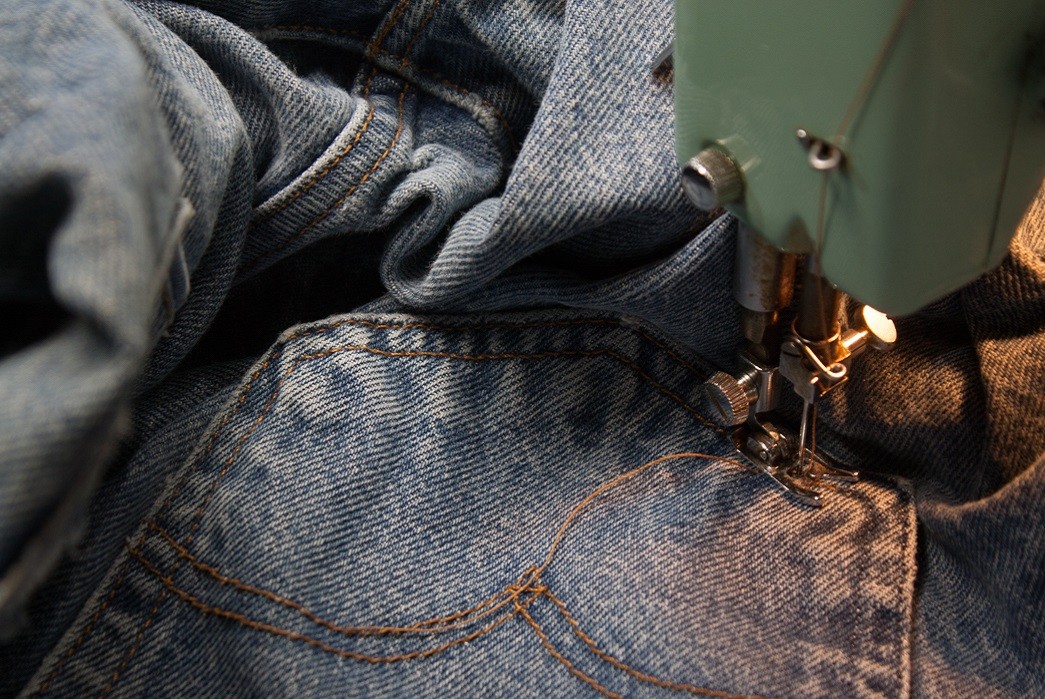
- Stop when you reach where the bar tack would be on the pocket. If both rows of stitching are damaged, sew up the other damaged seam before you move on to the bar tack.
- Now you are going to recreate the bar tack. Use a small zig-zag stitch with high stitches per inch.
- Finally, trim the loose thread and press the pocket if needed.

Repairing a Split Leg Seam
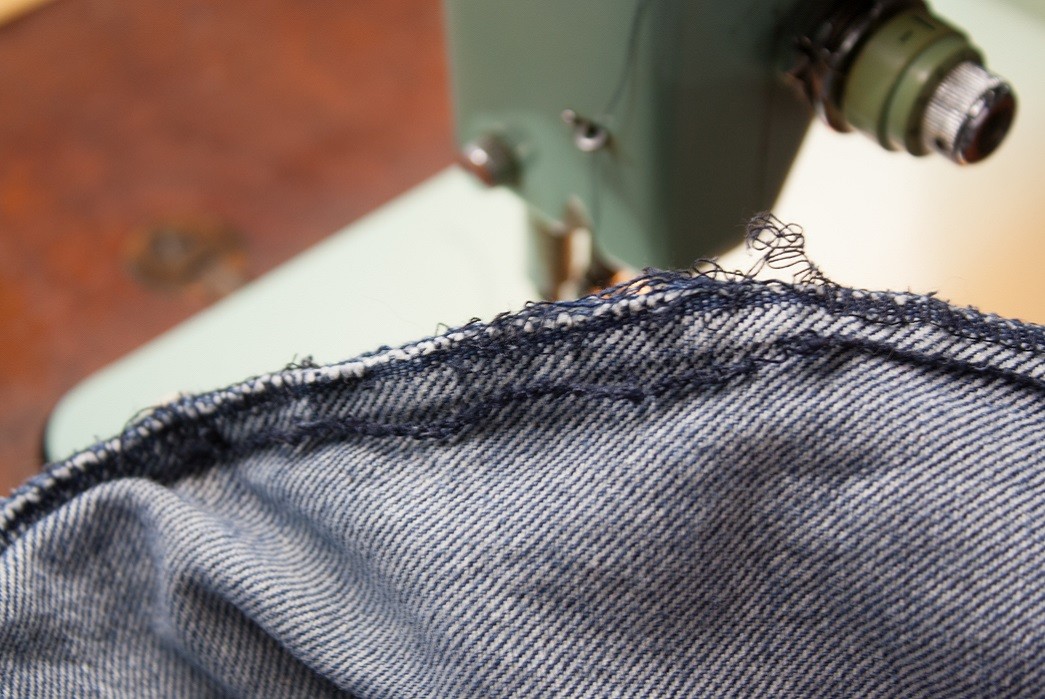
You just purchased your first pair of high end denim–A.P.C. Petit New Standards. Somebody on the internet told you to size down four from your typical size, after all, APCs will stretch nearly infinitely, and this is absolutely necessary in order to achieve the perfect fit. You try them on. The fit is on point. You take a couple of steps back and forth in front of a mirror, and the side seams simultaneously burst open under stress.
Everyone has been there at some point. Don’t panic though, this fix is super simple.
How to:
- Turn the jeans inside out.
- Trim any loose threads.
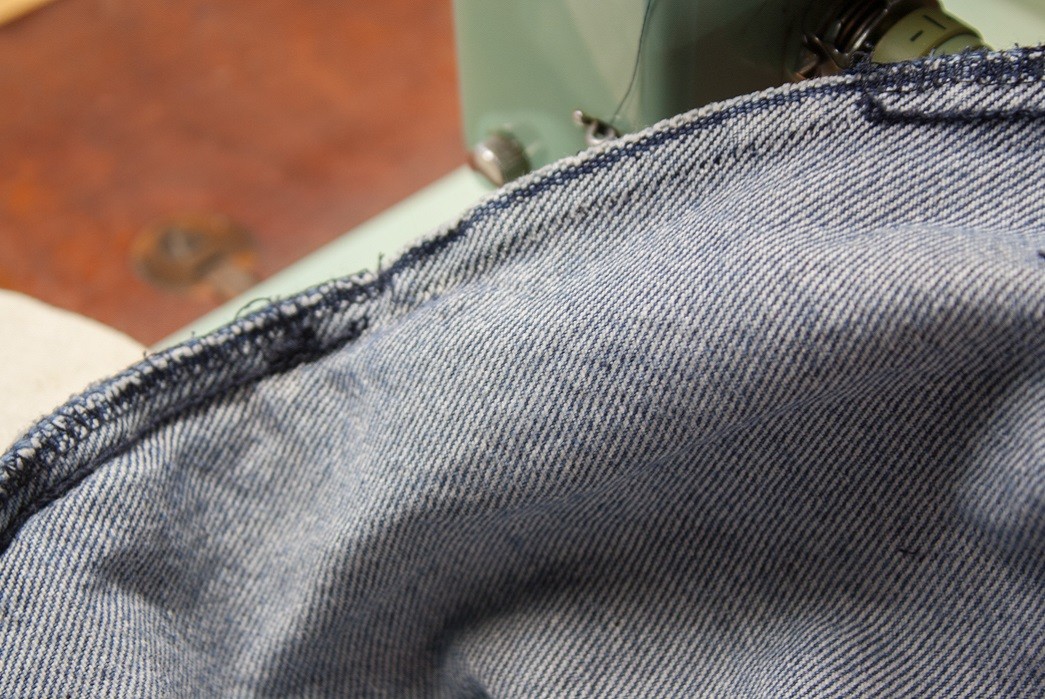
- The seam is likely chain stitched. Chain stitching is great, since it is slightly stronger than a lock stitch while it is intact. However, when it fails, it tends to unravel. Position the needle about an inch away from the damaged area.
- Stitch over the still intact seam a couple of times before you start to close the hole.
- Follow the crease in the seam until you have sealed the hole completely, and go over the still intact seam the same way you did at the start to prevent the seam from unraveling further.

- If your jeans are finished with an overlock stitch, fix that by going over wherever it is missing with a zig zag stitch. This isn’t a perfect fix, but it is better than either doing nothing, or buying a specialized machine for one repair.
- Trim any loose threads, and press everything flat.
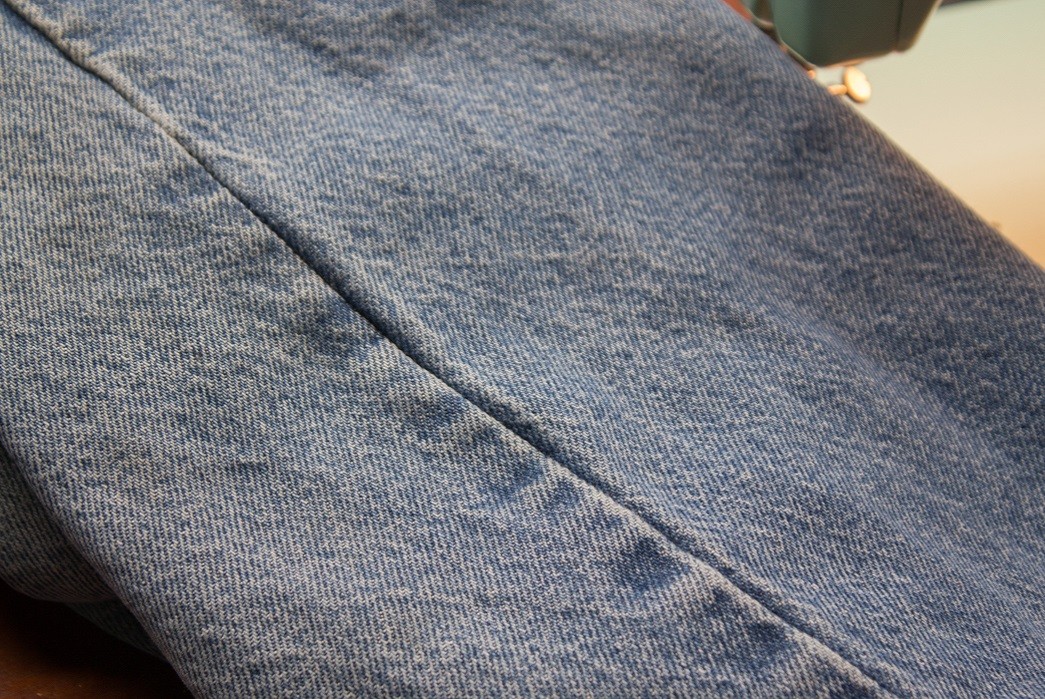
This can also occur on flat felled seams. The process for repairing these borrows elements from repairing the type of seam you will generally see on an outseam, and reattaching a back pocket.
How to:
- Trim the damaged threads.
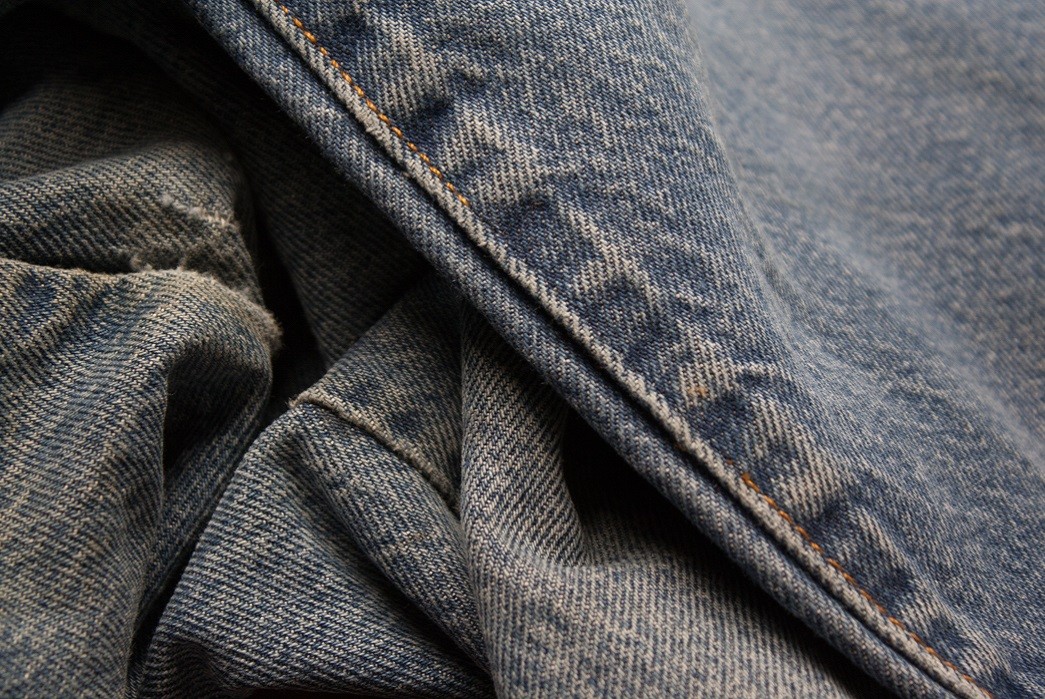
- Measure the stitches per inch, and try to match this while repairing.

- Position the needle three or four intact stitches away from the damaged area. This will help prevent the chain stitched hem from unraveling. Positioning for this repair can be a little tricky.
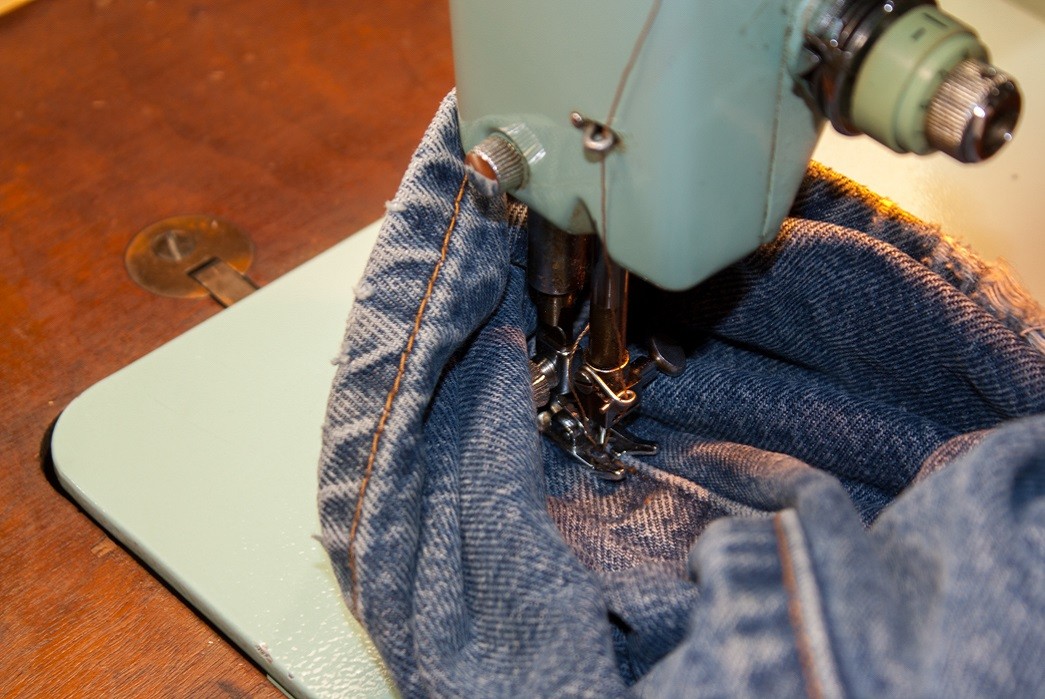
- Continue past the damaged area for three or four stitches.
- Trim any loose threads.
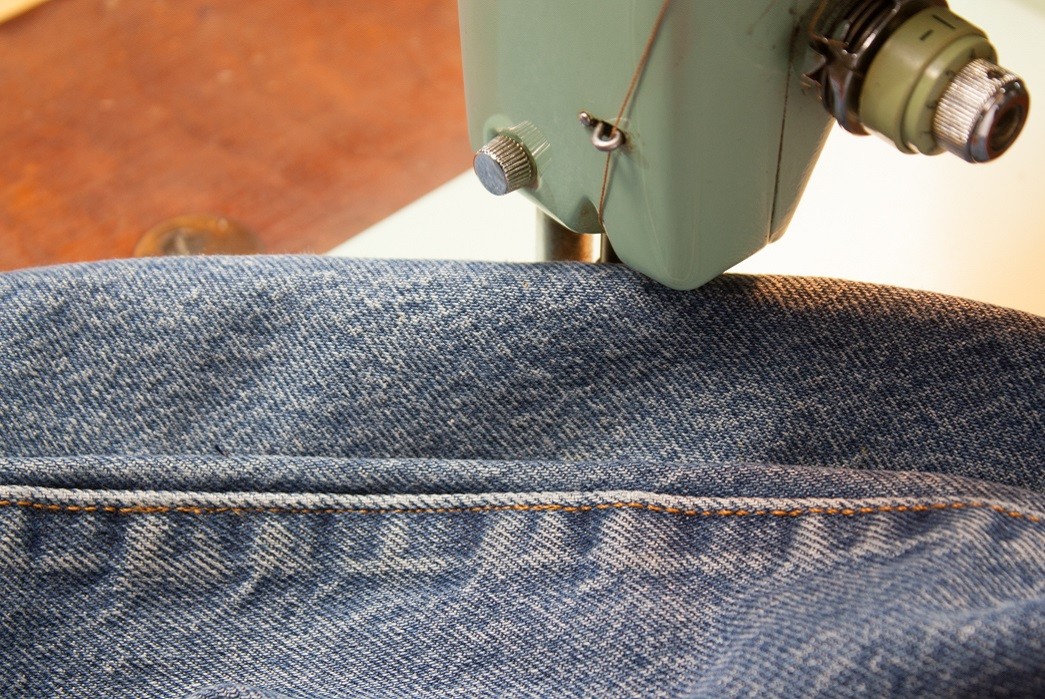
Detached Belt Loop Repair
Personally, this has happened a couple of times. It’s easy to get caught on something without noticing, pull away, and snap the loop off. This is especially true if you clip your keys to a belt loop. Luckily this is another easy fix.
How to:
- Since this is more visible than an interior side seam, use a thread that matches closely to the other stitching on the belt loops.
- To recreate the bar tack on a domestic sewing machine, I like to use the smallest possible zig-zag stitch and a stitch count around 10-12 stitches per inch, or as high as your machine will go.
- Remove any loose thread before you begin the repair.
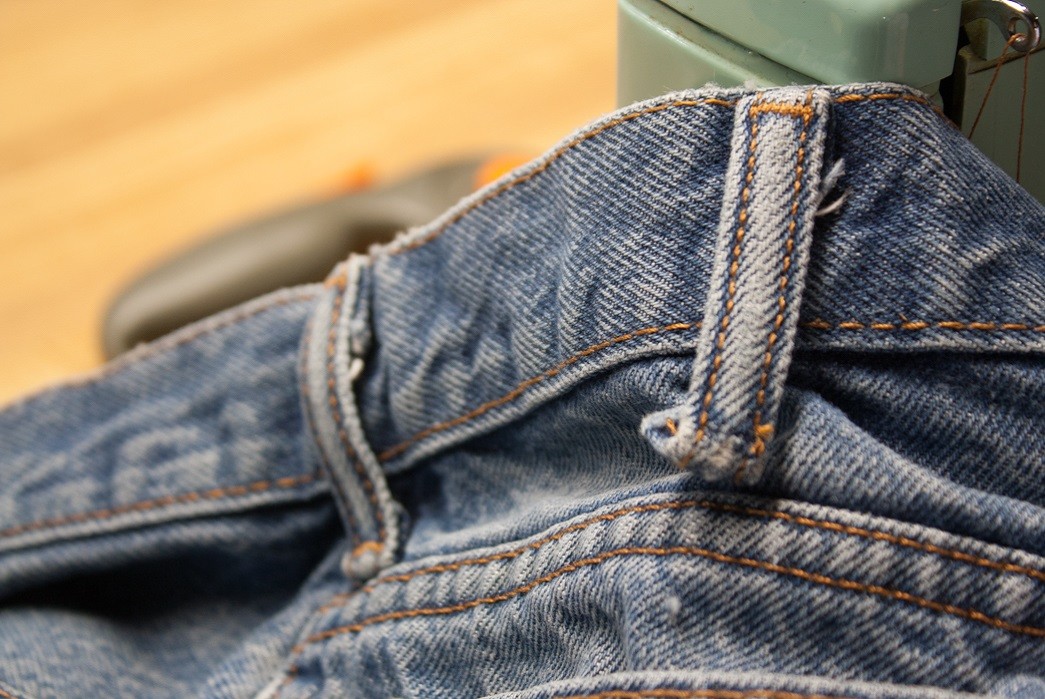
- Sew over where the bar tack used to be. I like to do one pass with a straight stitch followed by three or four with a zig zag.
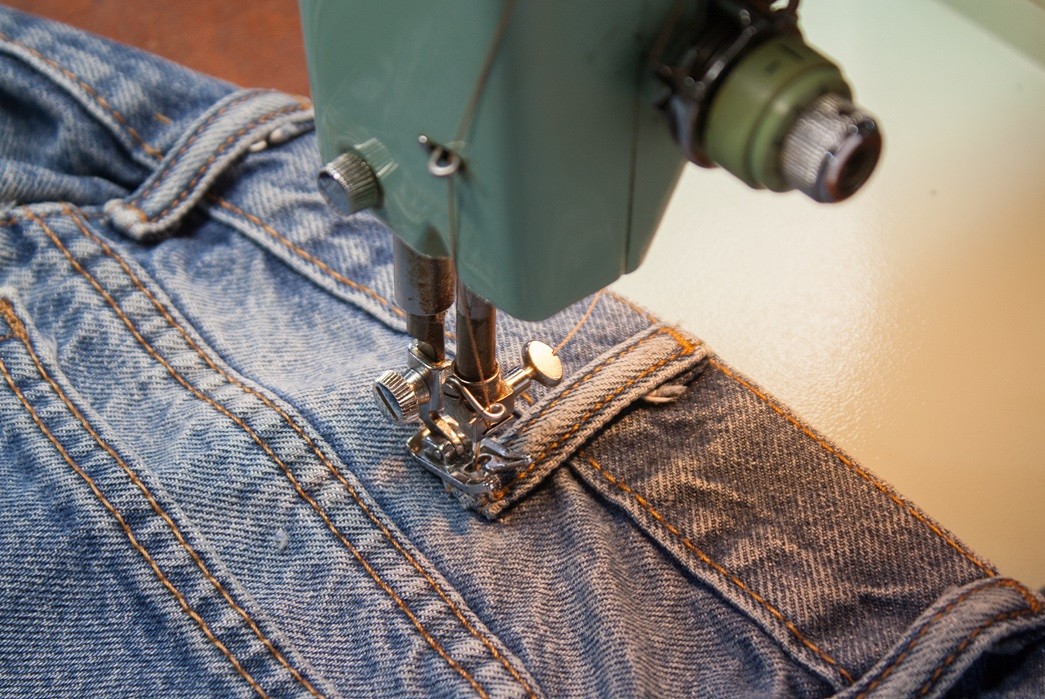
- Trim the loose threads and you’re done.
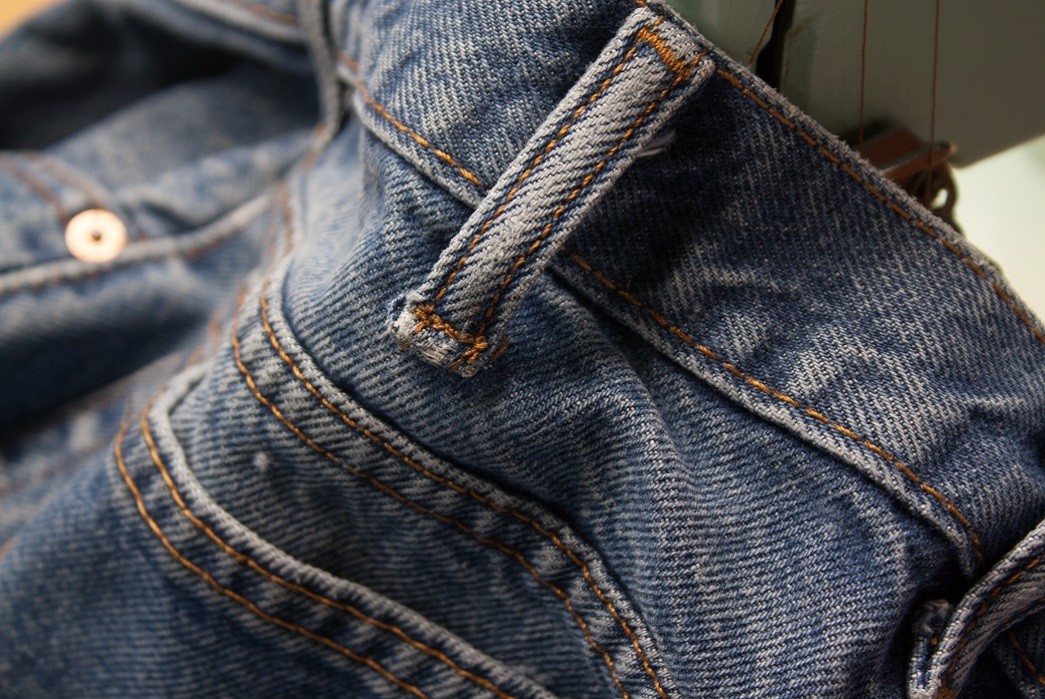
Replacing Pocket Bags
Sometimes, when a pocket bag wears through, either with a large hole or multiple holes, the best option is to replace the entire damaged portion of the pocket bag.
How to:
- Identify the damaged area of the pocket bag, and cut it off. Try to leave as much undamaged material as possible.
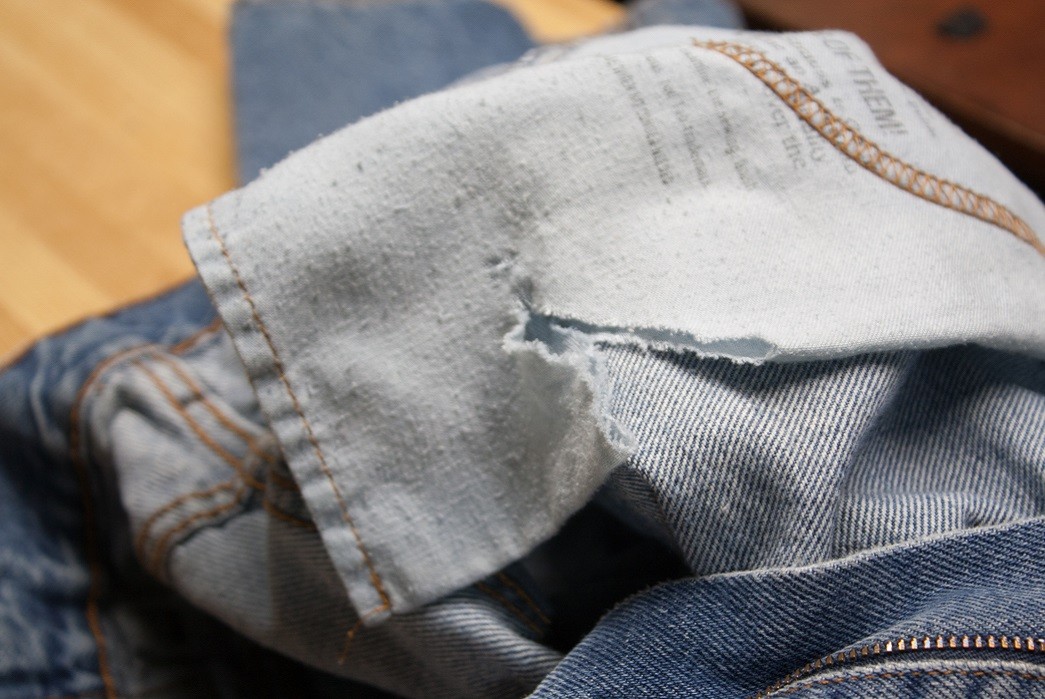
- Recreate the piece you just cut, adding 1″ for the seam allowance. Ideally you would do this in a fabric with similar weight, but stronger than the original. Ripstop cotton works well.
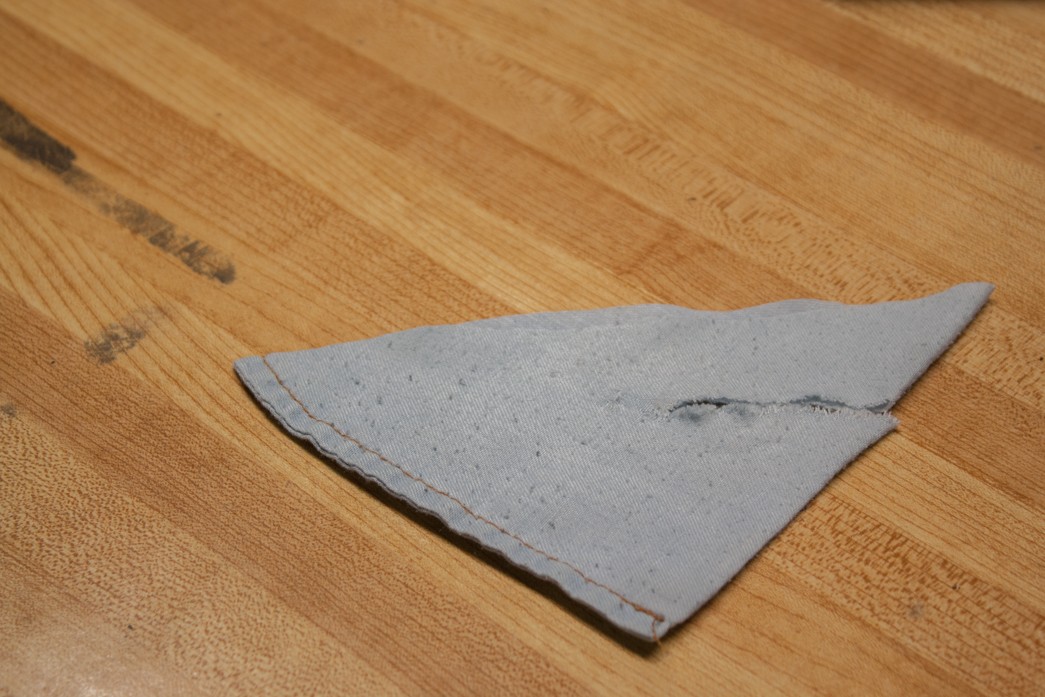
This is the damaged piece to recreate.
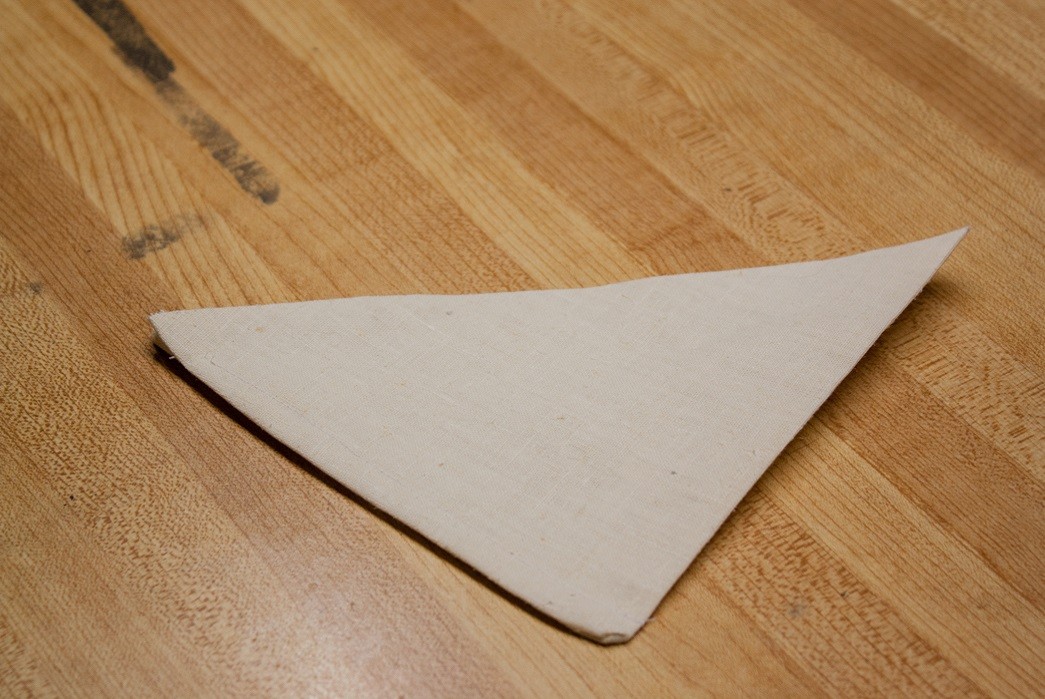
This is the recreated pocket. The very edge of the bottom seam is not fully sewn, which will make the piece easier to attach.
- Connect the two pieces with a French seam. With the pocket bag inside out, sew around the two pieces leaving a 1/4″ raw edge. Turn the pocket bag right side out, and sew around again to enclose the raw edge.
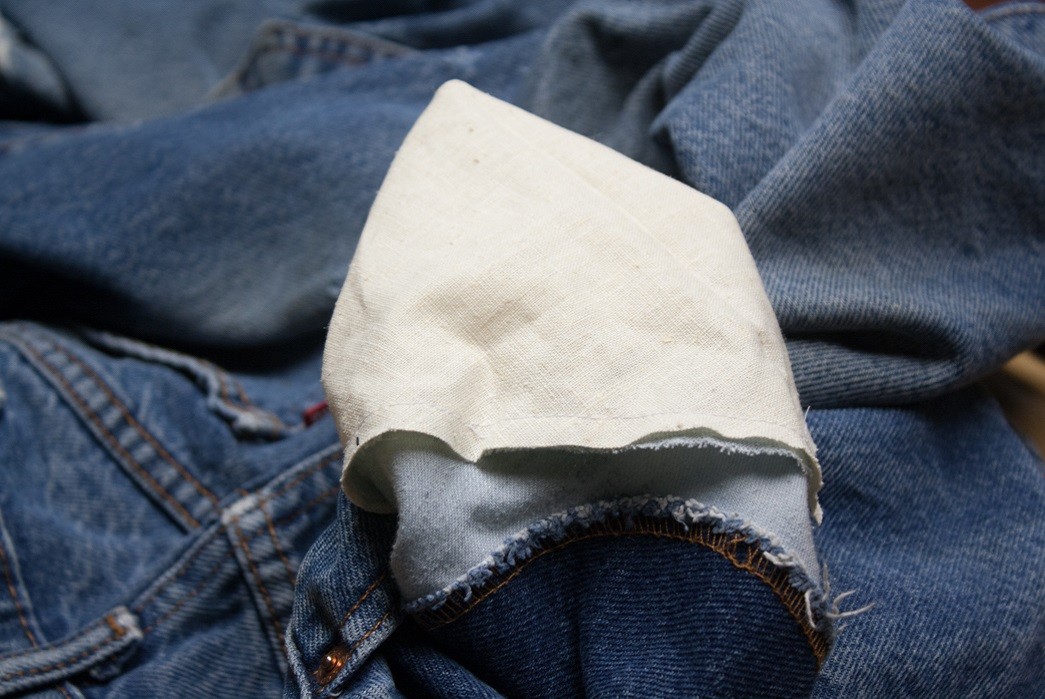
Stage one of sewing.
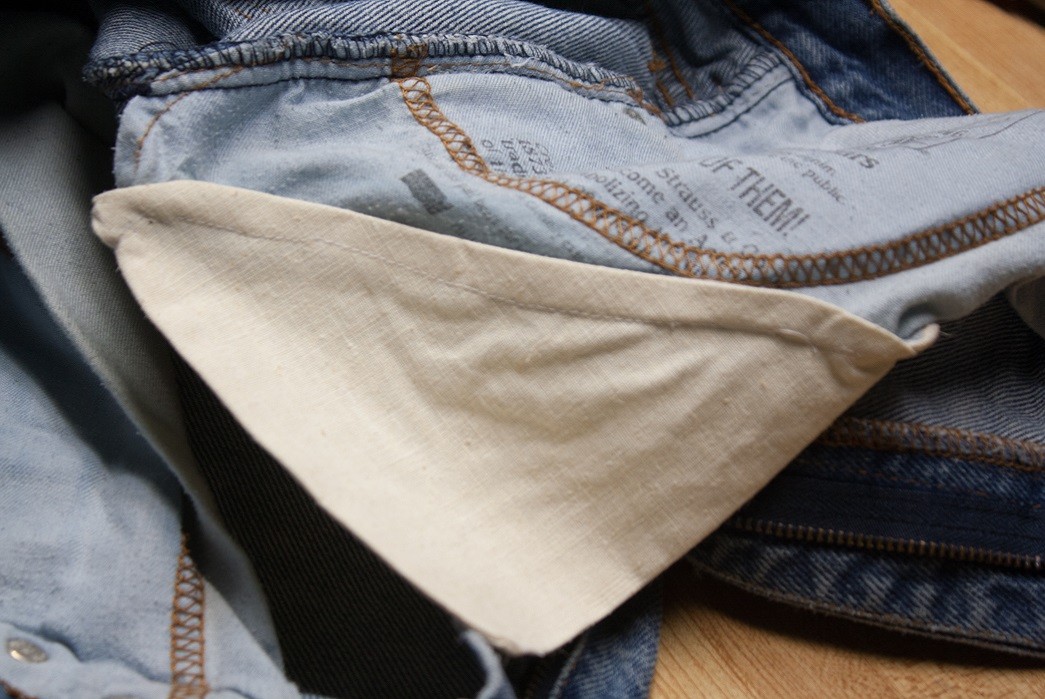
Stage two after pressing.
- Trim any loose thread and press so the seam sits flat.
Knowing how to do these relatively simple repairs is essential for anyone who wears their denim into the ground. They give you the opportunity to give new life to a nearly destroyed pair, and the foundation to learn how to make other structural repairs in a subtle way.


